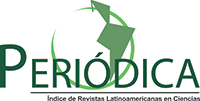Reduction of the risk of the corrosion of seawater mixed cement-based materials
DOI:
https://doi.org/10.21041/ra.v15i2.815Keywords:
seawater, chloride binding, free chloride, CaO/Al2O3, CaCO3/Al2O3Abstract
The objective of this study is to reduce the amount of free chloride that causes corrosion by employing different binders and to attain the free chloride level permitted by the relevant standards. The chloride content was determined by the X-ray fluorescence method. It was observed that the chloride binding capacity increased when the CaO/Al2O3 ratio decreased up to 4-6. On the other hand, it was determined that the chloride binding capacity decreased slightly when the CaCO3/Al2O3 ratio increased from 0 to 0.3-0.5, though no significant effect was observed after 0.5. The majority of binders demonstrated results below the maximum chloride level determined by the standards, which is a great opportunity to use seawater as mixing water for reinforced concrete.
Downloads
References
Angst, U., Elsener, B., Larsen, C. K., & Vennesland, Ø. (2009). Critical chloride content in reinforced concrete - A review. Cement and Concrete Research, 39(12), 1122–1138. https://doi.org/10.1016/j.cemconres.2009.08.006 DOI: https://doi.org/10.1016/j.cemconres.2009.08.006
Ann, K. Y., Kim, T. S., Kim, J. H., & Kim, S. H. (2010). The resistance of high alumina cement against corrosion of steel in concrete. Construction and Building Materials, 24(8), 1502–1510. https://doi.org/10.1016/j.conbuildmat.2010.01.022 DOI: https://doi.org/10.1016/j.conbuildmat.2010.01.022
Aydogan, O. G., Akca, A. H., Bilici, S., Oztürk, H., Dilber, A. A., & Ozyurt, N. (2024). Microstructural Examination of Black Seawater Mixed Sulfate-Resistant Cement Concrete. Journal of Materials in Civil Engineering, 36(1). https://doi.org/10.1061/jmcee7.mteng-15962
Aydogan, O. G., Dilber, A. A., Sepetci, A., Tarhan, M., & Ozyurt, N. (2024). Effect of Ion Concentration in the Mixing Water on Performance and Hydration Kinetics of Cement-Based Materials. In: Ferrara, L., Muciaccia, G., Di Summa, D. (Eds) Proceedings of the RILEM Spring Convention and Conference 2024. RSCC 2024. RILEM Bookseries. https://doi.org/10.1007/978-3-031-70281-5_46
Bentz, D. P. (2006). Modeling the influence of limestone filler on cement hydration using CEMHYD3D. Cement and Concrete Composites, 28(2), 124–129. DOI: https://doi.org/10.1016/j.cemconcomp.2005.10.006
Bizzozero, J. (2014). Hydration and dimensional stability of calcium aluminate cement based systems.
Chen, M., He, Y., Lu, L., & Zhang, X. (2023). Effect of High Content Limestone Powder on Microstructure and Mechanical Properties of Cement-based Materials. Journal Wuhan University of Technology, Materials Science Edition, 38(3), 557–566. https://doi.org/10.1007/s11595-023-2731-3
Cheng, S., Shui, Z., Sun, T., Huang, Y., & Liu, K. (2018). Effects of seawater and supplementary cementitious materials on the durability and microstructure of lightweight aggregate concrete. Construction and Building Materials, 190, 1081–1090. https://doi.org/10.1016/j.conbuildmat.2018.09.178
Dhir, R. K., Limbachiya, M. C., McCarthy, M. J., & Chaipanich, A. (2007). Evaluation of Portland limestone cements for use in concrete construction. Materials and Structures, 40, 459–473. DOI: https://doi.org/10.1617/s11527-006-9143-7
Díaz, B., Freire, L., Nóvoa, X. R., & Pérez, M. C. (2015). Chloride and CO2 transport in cement paste containing red mud. Cement and Concrete Composites, 62, 178–186. https://doi.org/10.1016/j.cemconcomp.2015.02.011 DOI: https://doi.org/10.1016/j.cemconcomp.2015.02.011
Ebead, U., Lau, D., Lollini, F., Nanni, A., Suraneni, P., & Yu, T. (2022). A review of recent advances in the science and technology of seawater-mixed concrete. Cement and Concrete Research, 152(December 2021), 106666. https://doi.org/10.1016/j.cemconres.2021.106666
Etxeberria, M., & Gonzalez-Corominas, A. (2018). Properties of Plain Concrete Produced Employing Recycled Aggregates and Sea Water. International Journal of Civil Engineering, 16(9), 993–1003. https://doi.org/10.1007/s40999-017-0229-0 DOI: https://doi.org/10.1007/s40999-017-0229-0
Evans, K. (2016). The history, challenges, and new developments in the management and use of bauxite residue. Journal of Sustainable Metallurgy, 2, 316–331. DOI: https://doi.org/10.1007/s40831-016-0060-x
Florea, M. V. A., & Brouwers, H. J. H. (2012). Chloride binding related to hydration products: Part I: Ordinary Portland Cement. Cement and Concrete Research, 42(2), 282–290. https://doi.org/10.1016/j.cemconres.2011.09.016 DOI: https://doi.org/10.1016/j.cemconres.2011.09.016
Gbozee, M., Zheng, K., He, F., & Zeng, X. (2018). The influence of aluminum from metakaolin on chemical binding of chloride ions in hydrated cement pastes. Applied Clay Science, 158(April), 186–194. https://doi.org/10.1016/j.clay.2018.03.038 DOI: https://doi.org/10.1016/j.clay.2018.03.038
Ghrici, M., Kenai, S., & Said-Mansour, M. (2007). Mechanical properties and durability of mortar and concrete containing natural pozzolana and limestone blended cements. Cement and Concrete Composites, 29(7), 542–549. DOI: https://doi.org/10.1016/j.cemconcomp.2007.04.009
Guo, Y., Zhang, T., Tian, W., Wei, J., & Yu, Q. (2019). Physically and chemically bound chlorides in hydrated cement pastes: a comparison study of the effects of silica fume and metakaolin. Journal of Materials Science, 54(3), 2152–2169. https://doi.org/10.1007/s10853-018-2953-5
He, Z., Zhu, X., Wang, J., Mu, M., & Wang, Y. (2019). Comparison of CO2 emissions from OPC and recycled cement production. Construction and Building Materials, 211, 965–973.
Homayoonmehr, R., Ramezanianpour, A. A., Moodi, F., Ramezanianpour, A. M., & Gevaudan, J. P. (2022). A Review on the Effect of Metakaolin on the Chloride Binding of Concrete, Mortar, and Paste Specimens. Sustainability (Switzerland), 14(22), 1–21. https://doi.org/10.3390/su142215022
Hu, X., Shi, C., Yuan, Q., Zhang, J., & Schutter, G. De. (2018). Influences of chloride immersion on zeta potential and chloride concentration index of cement-based materials. Cement and Concrete Research, 106, 49–56. DOI: https://doi.org/10.1016/j.cemconres.2018.01.015
Khatibmasjedi, M., Ramanathan, S., Suraneni, P., & Nanni, A. (2020). Compressive strength development of seawater-mixed concrete subject to different curing regimes. ACI Materials Journal, 117(5), 3–12. https://doi.org/10.14359/51725973
Kim, H., Son, H. M., & Lee, H. K. (2021). Review on recent advances in securing the long-term durability of calcium aluminate cement (cac)-based systems. Functional Composites and Structures, 3(3). https://doi.org/10.1088/2631-6331/ac1913
Lapeyre, J., Ponduru, S. A., Okoronkwo, M., Ma, H., & Kumar, A. (2022). Hydration of high-alumina calcium aluminate cements with carbonate and sulfate additives. Journal of Thermal Analysis and Calorimetry, 147(10), 5575–5587. https://doi.org/10.1007/s10973-021-10939-4
Li, G., Zhang, A., Song, Z., Shi, C., Wang, Y., & Zhang, J. (2017). Study on the resistance to seawater corrosion of the cementitious systems containing ordinary Portland cement or/and calcium aluminate cement. Construction and Building Materials, 157, 852–859. https://doi.org/10.1016/j.conbuildmat.2017.09.175 DOI: https://doi.org/10.1016/j.conbuildmat.2017.09.175
Li, H., Farzadnia, N., & Shi, C. (2018). The role of seawater in interaction of slag and silica fume with cement in low water-to-binder ratio pastes at the early age of hydration. Construction and Building Materials, 185, 508–518. https://doi.org/10.1016/j.conbuildmat.2018.07.091
Li, P., Li, W., Sun, Z., Shen, L., & Sheng, D. (2021). Development of sustainable concrete incorporating seawater: A critical review on cement hydration, microstructure and mechanical strength. Cement and Concrete Composites, 121(May), 104100. https://doi.org/10.1016/j.cemconcomp.2021.104100
Li, Q., Geng, H., Shui, Z., & Huang, Y. (2015). Effect of metakaolin addition and seawater mixing on the properties and hydration of concrete. Applied Clay Science, 115, 51–60. https://doi.org/10.1016/j.clay.2015.06.043 DOI: https://doi.org/10.1016/j.clay.2015.06.043
Lim, E. D., Roxas, C. L., Gallardo, R., Nishida, T., & Otsuki, N. (2015). Strength and corrosion behavior of mortar mixed and/or cured with seawater with various fly ash replacement ratios. Asian Journal of Civil Engineering, 16(6), 835–849.
Livesey, P. (1991). Performances of limestone-filled cements. Swamy RN, Blended Cements in Construction. London.
Lollini, F., Redaelli, E., & Bertolini, L. (2014). Effects of portland cement replacement with limestone on the properties of hardened concrete. Cement and Concrete Composites, 46, 32–40. https://doi.org/10.1016/j.cemconcomp.2013.10.016 DOI: https://doi.org/10.1016/j.cemconcomp.2013.10.016
Lothenbach, B., Le Saout, G., Gallucci, E., & Scrivener, K. (2008). Influence of limestone on the hydration of Portland cements. Cement and Concrete Research, 38(6), 848–860. https://doi.org/10.1016/j.cemconres.2008.01.002 DOI: https://doi.org/10.1016/j.cemconres.2008.01.002
Luz, A. P., & Pandolfelli, V. C. (2012). CaCO 3 addition effect on the hydration and mechanical strength evolution of calcium aluminate cement for endodontic applications. Ceramics International, 38(2), 1417–1425. https://doi.org/10.1016/j.ceramint.2011.09.021 DOI: https://doi.org/10.1016/j.ceramint.2011.09.021
Martin-Perez, B., Zibara, H., Hooton, R. D., & Thomas, M. D. A. (2000). A study of the effect of chloride binding on service life predictions. Cement and Concrete Research, 30(8), 1215–1223. DOI: https://doi.org/10.1016/S0008-8846(00)00339-2
Matschei, T., Lothenbach, B., & Glasser, F. P. (2007). The role of calcium carbonate in cement hydration. Cement and Concrete Research, 37(4), 551–558. https://doi.org/10.1016/j.cemconres.2006.10.013 DOI: https://doi.org/10.1016/j.cemconres.2006.10.013
Miller, S. A., Horvath, A., & Monteiro, P. J. M. (2018). Impacts of booming concrete production on water resources worldwide. Nature Sustainability, 1(1), 69–76. https://doi.org/10.1038/s41893-017-0009-5 DOI: https://doi.org/10.1038/s41893-017-0009-5
Mohammed, T. U., Hamada, H., & Yamaji, T. (2004). Performance of seawater-mixed concrete in the tidal environment. Cement and Concrete Research, 34(4), 593–601. https://doi.org/10.1016/j.cemconres.2003.09.020 DOI: https://doi.org/10.1016/j.cemconres.2003.09.020
Neville, A. M. (2011). Properties of Concrete.
Nishida, T., Ph, D., Otsuki, N., Ph, D., Asce, M., & Ohara, H. (2015). Some Considerations for Applicability of Seawater as Mixing Water in Concrete. Journal of Materials in Civil Engineering, 27(7). https://doi.org/10.1061/(ASCE)MT.1943-5533.0001006. DOI: https://doi.org/10.1061/(ASCE)MT.1943-5533.0001006
Ribeiro, D. V., Labrincha, J. A., & Morelli, M. R. (2011a). Chloride diffusivity in red mud-ordinary portland cement concrete determined by migration tests. Materials Research, 14(2), 227–234. https://doi.org/10.1590/S1516-14392011005000026 DOI: https://doi.org/10.1590/S1516-14392011005000026
Ribeiro, D. V., Labrincha, J. A., & Morelli, M. R. (2011b). Potential use of natural red mud as pozzolan for Portland cement. Materials Research, 14(1), 60–66. https://doi.org/10.1590/S1516-14392011005000001 DOI: https://doi.org/10.1590/S1516-14392011005000001
Rilem TC 178. (2002). Analysis of water soluable chloride in concrete. Materials and Structures, 35(November 2002), 586–588. DOI: https://doi.org/10.1617/13841
Scrivener, K. L., Newman, J., & Choo, B. S. (2003). Calcium aluminate cements. Advanced concrete technology. DOI: https://doi.org/10.1016/B978-075065686-3/50278-0
Shi, Z., Shui, Z., Li, Q., & Geng, H. (2015). Combined effect of metakaolin and sea water on performance and microstructures of concrete. Construction and Building Materials, 74, 57–64. https://doi.org/10.1016/j.conbuildmat.2014.10.023 DOI: https://doi.org/10.1016/j.conbuildmat.2014.10.023
Siddique, R., & Khan, M. I. (2011). Supplementary Cementing Materials. DOI: https://doi.org/10.1007/978-3-642-17866-5
Talero, R., Trusilewicz, L., Delgado, A., Pedrajas, C., Lannegrand, R., Rahhal, V., Mejía, R., & Delvasto, S. (2011). Comparative and semi-quantitative XRD analysis of Friedel ’ s salt originating from pozzolan and Portland cement. Construction and Building Materials, 25(5), 2370–2380. https://doi.org/10.1016/j.conbuildmat.2010.11.037 DOI: https://doi.org/10.1016/j.conbuildmat.2010.11.037
Thomas, M. D. A., Hooton, R. D., Scott, A., & Zibara, H. (2012). The effect of supplementary cementitious materials on chloride binding in hardened cement paste. Cement and Concrete Research, 42(1), 1–7. https://doi.org/10.1016/j.cemconres.2011.01.001 DOI: https://doi.org/10.1016/j.cemconres.2011.01.001
UNESCO. (2020). United nations world water development report 2020: water and climate change. https://aquadocs.org/handle/1834/42227%0Ahttps://unesdoc.unesco.org/ark:/48223/pf0000372985/PDF/372985eng.pdf.multi
Wang, Y., Shui, Z., Gao, X., Huang, Y., Yu, R., & Song, Q. (2020). Chloride binding capacity and phase modification of alumina compound blended cement paste under chloride attack. Cement and Concrete Composites, 108(March 2019), 103537. https://doi.org/10.1016/j.cemconcomp.2020.103537
Wang, Y., Shui, Z., Gao, X., Yu, R., Huang, Y., & Cheng, S. (2019). Understanding the chloride binding and diffusion behaviors of marine concrete based on Portland limestone cement-alumina enriched pozzolans. Construction and Building Materials, 198, 207–217. https://doi.org/10.1016/j.conbuildmat.2018.11.270
Wang, Y., Zhang, T., Lyu, G., Guo, F., Zhang, W., & Zhang, Y. (2018). Recovery of alkali and alumina from bauxite residue (red mud) and complete reuse of the treated residue. Journal of Cleaner Production, 188, 456–465. DOI: https://doi.org/10.1016/j.jclepro.2018.04.009
Wei, J., & Gencturk, B. (2019). Hydration of ternary Portland cement blends containing metakaolin and sodium bentonite. Cement and Concrete Research, 123(May 2017), 105772. https://doi.org/10.1016/j.cemconres.2019.05.017
Worrell, E., Price, L., Martin, N., Hendriks, C., & Meida, L. O. (2001). Carbon Dioxide Emissions from the Global Cement Industry. Annual Review of Energy and the Environment, 26, 303–329. DOI: https://doi.org/10.1146/annurev.energy.26.1.303
Xue, S., Zhu, F., Kong, X., Wu, C., Huang, L., Huang, N., & Hartley, W. (2016). A review of the characterization and revegetation of bauxite residues (Red mud)le. Environmental Science and Pollution Research, 23, 1120–1132. DOI: https://doi.org/10.1007/s11356-015-4558-8
Younis, A., Ebead, U., Suraneni, P., & Nanni, A. (2018). Fresh and hardened properties of seawater-mixed concrete. Construction and Building Materials, 190, 276–286. https://doi.org/10.1016/j.conbuildmat.2018.09.126
Zhang, J., Zhang, N., Li, C., & Zhang, Y. (2021). Strength development mechanism of a marine binding material with red mud and seawater. Construction and Building Materials, 303(August), 124428. https://doi.org/10.1016/j.conbuildmat.2021.124428
Zhao, Y., Hu, X., Shi, C., Yuan, Q., & Zhu, D. (2021). Determination of free chloride in seawater cement paste with low water-binder ratio. Cement and Concrete Composites, 124(August), 104217. https://doi.org/10.1016/j.cemconcomp.2021.104217
Zhu, Z., Wang, Z., Xu, L., Peng, X., Zhou, Y., & Wu, K. (2022). Phase-dependent study of chloride binding capacity and its relation to the properties of CAC. Journal of Building Engineering, 46(September 2021), 103718. https://doi.org/10.1016/j.jobe.2021.103718
Published
How to Cite
Issue
Section
License
_______________________________
License in effect from September 2020
You are free to:
- Share — copy and redistribute the material in any medium or format for any purpose, even commercially.
- Adapt — remix, transform, and build upon the material for any purpose, even commercially.
- The licensor cannot revoke these freedoms as long as you follow the license terms.
Under the following terms:
- Attribution — You must give appropriate credit , provide a link to the license, and indicate if changes were made . You may do so in any reasonable manner, but not in any way that suggests the licensor endorses you or your use.
- No additional restrictions — You may not apply legal terms or technological measures that legally restrict others from doing anything the license permits.
Notices:
You do not have to comply with the license for elements of the material in the public domain or where your use is permitted by an applicable exception or limitation .
No warranties are given. The license may not give you all of the permissions necessary for your intended use. For example, other rights such as publicity, privacy, or moral rights may limit how you use the material.





















.png)














